Remarkable famous chairs
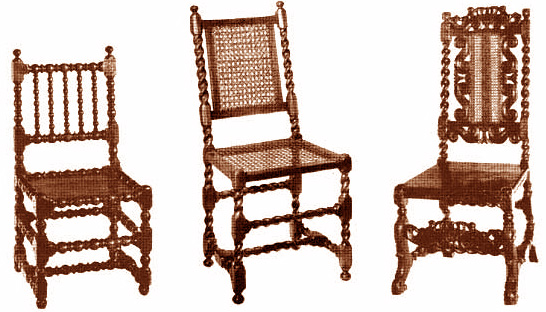 |
Tudor chairs 1558 íŽ 1603 Tudor furniture was made of oak or wood which was obtained locally, highly ornate, carved and heavy |
 |
William and Mary 1689 - 1702, William and Mary style has Flemish, Dutch, French and Chinese influences. |
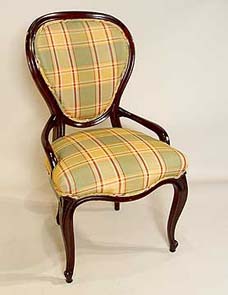 |
1702 - 1714 The Queen Anne style is a refinement of the William and Mary style with lighter, graceful, more comfortable furniture. |
 |
1714 - 1727 Much of the George I furniture was made of walnut and also veneered with walnut (veneering: covering with thin layers) The serpentine curves, the cabriole leg of rounded section and the claw-and-ball-foot were all features of "George I" period chairs in England. |
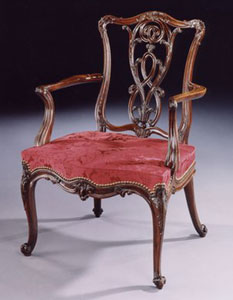 |
1718 - 1779 The designs of Thomas Chippendale cover a wide range of styles, from Rococo to Gothic and oriental style. see more |
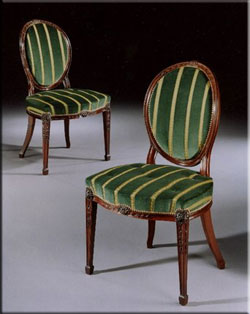 |
1728 -1792 Robert Adam the ornate curvature of the Chippendale designs with the straight lines of Roman columns. The chair back usually has the classical motif like the shape of a Greek lyre. Furniture at this time was often made of mahogany and satinwood. |
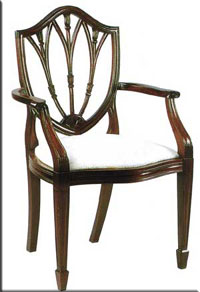 |
George
Hepplewhite gave his name to a distinctive style of light, elegant
furniture that was fashionable at the end of the 18th century. One
characteristic that is seen in many of his designs is a shield-shaped
chair back. Satinwood and walnut were often used in his furniture. |
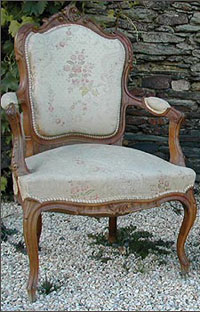 |
1722 - 1774 Rococo furniture is associated with the French Louis XV style. Curved lines and asymmetry became the rule and was expressed in the elaboration of surface ornament. Rocks and shells with foliage and flowers dominated the theme of the ornament with blossoms, sprays and tendrils, reeds, branches of palm and laurel. The acanthus leaf, originated in ancient Greece, often elaborately serrated and fringed became very long and narrow. Especially fashionable themes were musical instruments, such as the violin, flageolet and tambourine, hunting and fishing, symbols of love, such as bows, arrows and torches, and pastoral emblems, such as crooks and the large straw hats of shepherdesses. |
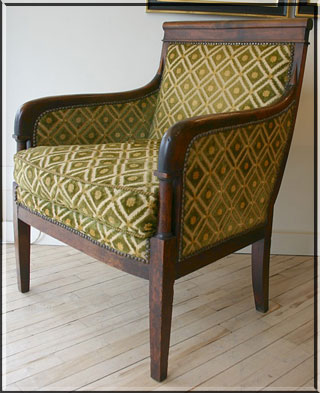 |
19th century Empire is an early
19th century style of architecture and furniture design during the rule
of France by Napoleon I (1769 - 1821) who became Emperor (1804 - 1814). |
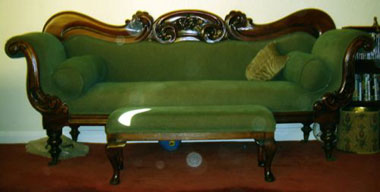 |
1837-1901 The Victorian age furniture draws its influence from gothic forms with heavy proportions, dark finish, elaborate carving, and ornamentation. Victorian age furniture has a strong Rococo and Louis XV influence. Exaggerated curves, lush upholstery and decorative carvings are featured. Samuel Pratt patented in 1828 the coiled spring for use in upholstery. To accommodate the springs in chairs, upholstery on seat had to be improved in quality and seats were made deeper. This meant that chair legs became shorter. Mahogany and rosewood were the woods of choice with oak (usually stained dark) making something of a comeback from the depths of time. |
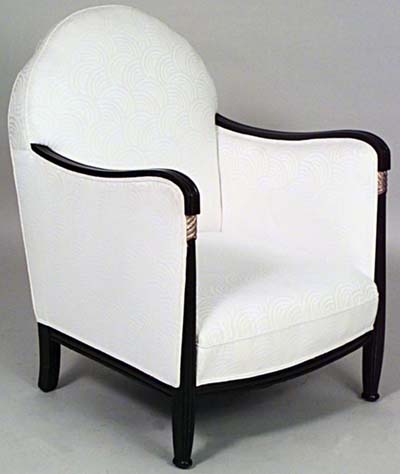 |
Art
Deco was a popular international design movement from 1925 until 1939,
in a sense, an amalgam of many different styles and movements of the
early 20th century, including Neoclassical, Constructivism, Cubism,
Modernism, Art Nouveau, and Futurism. Art Deco is characterized by use of materials such as aluminium, stainless steel, leather, lacquer, inlaid wood and exotic materials such as ivory, shark skin, and zebra skin. Its popularity peaked in Europe during the 1920s and continued strongly in the United States through the 1930s. At the time, this style was seen as elegant, functional, and modern. Art Deco had a profound influence on many later artistic movements, such as Memphis and Pop art. |